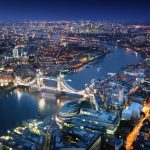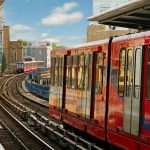Whilst a seasoned veteran of London local government – first elected to the Royal Borough in 2006 – Cllr Campbell made it clear that rather than focusing on her experience and the lessons learned so far in her career, she wanted to talk about the future of her borough. Fitting, for someone who also happens to be the “Executive Member for London’s Future: Business, Economy and Culture” at London Councils, the cross-party umbrella body bringing together the capital’s local authorities.
Her home borough of Kensington & Chelsea’s vision for the future is spelled out in its newly-adopted four-year Council Plan. This sets out how RBKC aims to become nothing less than “the best council” for its residents and a borough that is Greener, Safer, and Fairer. RBKC’s ambitions for the future are also reflected in a new Local Plan, currently in-the-works, which recently completed its Regulation 19 Consultation. We discussed what these two flagship policies mean for landowners and developers in RBKC.
We also talked about her work at London Councils and its vision for the Central Activities Zone and the capital as a whole.
Co-production
The new RBKC Council Plan is built on a “mission set to us by the bereaved and the survivors of the 2017 Grenfell Tower fire, who said they want us to become the best council in the country.” Indeed, in the aftermath of the Grenfell fire, the Royal Borough signed up to the so-called “Hillsborough Charter” (as the Charter for Families Bereaved Through Public Tragedy is often referred to).
From that point on, says Campbell, “practically everything we do has been co-designed with residents, so proper consultation is absolutely fundamental to working in Kensington & Chelsea” and central to the City Plan and the new Local Plan. She is pleased to note that “that’s what developers are already doing in our big Opportunity Areas, at Earls’ Court and in Kensal.”
She also notes that Development Forums are an increasingly “important part of planning process so that we talk to our communities and design what’s best for everyone,” as are digital platforms for consultation and the Royal Borough’s well-established Youth Council. All, she says, have proven crucial to expanding and diversifying participation in the planning system.
Amazing spaces
“We genuinely think that K&C’s built environment is absolutely unique – from our architecture, to our ‘village feel’ and our high streets. And so, amazing spaces are one of the things that we really want to concentrate on.”
Whilst that translates into a continued commitment “to preserve the best from the borough’s past,” RBKC is also keen to “to make the borough the best place for the 21st century” and “create the conservation areas of the future.”
Indeed, the Royal Borough is in no way resistant to change. “Again, it’s about becoming the best. Not sitting on our laurels, but saying how can we be better than all our peers and how can our organisation become a better version of what we have been in the past – and a lot of that is about what we do with our public spaces.”
After all, “everyone needs a refresh,” says Campbell, who underlines that whilst protecting the heritage and character of its neighbourhoods and high streets remains a major priority, there is ample space for new things in RBKC: “we do set out where tall buildings can work in our Opportunity Areas” and “we are absolutely open for business.”
High streets
“We believe in a vibrant, buzzy high street,” says Campbell, arguing that it was RBKC that “led the al fresco revolution across London” and pointing to Council policies that have “completely changed” areas like Sloane Square, in her own ward, by enabling local businesses to “have the confidence to invest in good outdoor dining facilities.”
She also highlights RBKC’s close collaboration with the likes of Cadogan – RBKC’s “biggest landowner” – on Sloane Street and new Business Improvement Districts on Kensington High Street, the King’s Road, and in Knightsbridge to improve and refresh its high streets’ public realm and offer to visitors and local residents alike. She described these as “perfect examples of public-private cooperation” and “incredibly successful.”
Going green
Campbell says that the Royal Borough’s policies are not only setting out an “expectation for going green” but actively “helping and guiding people to get there.”
“We can do all this and we are leading the way – we’ve got plans to retrofit all of our schools with more insulation and solar panels on their roofs, and are building new council homes with air source heat pumps and double glazing. But we are also asking ourselves: How do we make it easier for our residents and businesses?”
One major effort spearheaded by RBKC is enabling building owners to retrofit listed buildings. “We have 4,000 listed buildings alone and that’s quite a challenge, so we’re making it easier in planning terms to put solar panels on roofs and looking at how we can change policy on double glazing in listed buildings as well.”
Culture and the creative industries
RBKC is home to “antique collectors, artists, production companies, interior designers” and the new Local Plan correspondingly “earmarks employment zones for creative industries to thrive.”
Campbell also stressed that RBKC is working with local cultural institutions “to strengthen their offer to the local community” in particular.
Local benefits
Indeed, that last point figures prominently across the Council Plan and new Local Plan: “we are making sure that our Opportunity Areas create opportunities for our whole community” including ensuring that “we do get proper affordable housing, because, oh my, we really need it and it’s one of our absolute priorities.”
The borough itself is putting its money where its mouth is, with its New Homes Delivery Programme delivering 600 new homes including a minimum of 300 “properly, properly social housing”.
Beyond Kensington & Chelsea
RBKC is of course an integral part of Central London’s ecosystem. Asked about relations with neighbouring Westminster – a historically Conservative-led borough won by Labour at the last local election – Campbell did not skip a beat. “We work very pragmatically with Westminster, with whom we share all our children’s, families’ and adult social care services. That’s a huge shared workforce and we work extremely well with them. In fact, Ofsted rated our children’s services as ‘outstanding’ and that’s not something that we intend to mess with.”
She’s also keen to stress that this good practical working relationship between boroughs “is true across London” and she would know: Campbell has held senior leadership roles in the London-wide London Councils membership body and previously with the CAZ-focused Central London Forward partnership. “Council Leaders across the capital are realising that whatever ‘flavour’ the next government comes in, whether Conservative or Labour, we need to be united to make sure we make the case for London on a cross-party basis, along with the GLA and with businesses and to compete globally as a city with the likes of Paris and New York.” Campbell highlights two relevant initiatives to promote these pan-London missions.
First the Opportunity London partnership, which has set out to promote the city as an investment destination. It’s about telling investors “here we are, we’re open for investment.” That London is “a stable city, with stable politics,” and that “we are absolutely open to talk to anyone who wants to come to London and help make our vision for the next 25 years a reality.”
Second, London Councils’ efforts to lobby Government about devolving further powers, with a particular focus on allowing London to raise more funding locally. London Councils has identified and mapped the city’s various strategic infrastructure needs – whether housing, drainage, or transport – and drawn up proposals for financing these. “We’re not asking for huge amounts more money,” she stresses. “All we’re asking Government is to allow us to keep more of the profit generated by London within London” and she points to how the Elizabeth Line and Northern Line were funded as a model that can be replicated. “London is a mature, grown-up city and we just want to be able to provide for ourselves.”
Working with business
Turning back to RBKC, Campbell notes that the pandemic acted as a positive catalyst for the Royal Borough’s collaboration with businesses. “We have huge connections with business, which we didn’t have previously if I’m honest. But Covid made us up our game. We now have an Employers Forum, talk to businesses a lot about the skills they need and try and match them with unemployed residents though local job fairs. We also talk to them regularly about what they need from the borough” on other fronts also.
From London Councils’ point of view, “we are really interested in attracting investors and any businesses who want to be part of Opportunity London, we would welcome with open arms – they just need to get in touch!”
And as we wrapped up a fun, wide-ranging conversation, Campbell pulled us back with a cheerful challenge to one of London’s international competitors: “Oh and one other thing! You should say that we believe we are Paris’ 21st Arrondissement. Because you don’t need to go to Paris, you just need to come to Chelsea Cultural Quarter. No need to go abroad!”
This interview was conducted by London Communications Agency on behalf of the London Property Alliance as part of its curation of the monthly Central London Planning & Politics newsletter.
Read more from our London Leaders series here.


